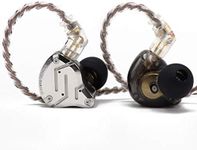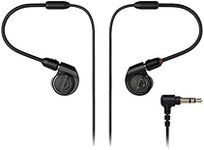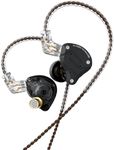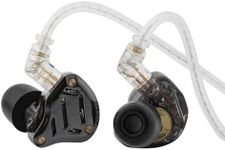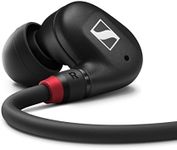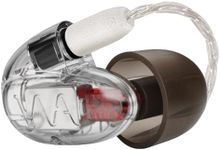Buying Guide for the Best In Ear Monitors For Singers
Choosing the right in-ear monitors (IEMs) for singers is crucial for both live performances and studio work. The right pair will help you hear yourself clearly, protect your hearing, and allow you to perform with confidence. When shopping for IEMs, it's important to understand the key features and how they relate to your specific needs as a singer. Consider where you'll be using them most (stage, studio, rehearsals), your comfort preferences, and the type of music you perform. By focusing on the main specifications, you can find a pair that enhances your performance and keeps you comfortable during long sessions.Driver Type and CountThe driver is the part of the IEM that produces sound. More drivers generally mean better separation of different frequencies (bass, mids, treble), which can make vocals and instruments clearer. Single-driver IEMs are simpler and can be lighter, but may not separate sounds as well. Dual or triple-driver models offer more clarity and detail, especially for complex music. If you sing in a band with lots of instruments, more drivers can help you hear your voice better. For solo or acoustic performers, a single or dual driver may be enough.
Fit and ComfortFit refers to how well the IEMs sit in your ears, and comfort is about how they feel during long use. Good fit is important for sound isolation and preventing the monitors from falling out. Universal-fit IEMs come with different ear tips to suit most ears, while custom-fit IEMs are molded to your ear shape for maximum comfort and isolation. If you perform for long periods or move a lot on stage, custom-fit might be worth considering. For occasional use, universal-fit with the right tips can be comfortable and effective.
Sound IsolationSound isolation is how well the IEMs block out external noise. This is important for singers because it helps you focus on your own voice and the mix, rather than the noise from the stage or audience. Higher isolation is achieved with better-fitting IEMs and deeper ear tips. If you perform in loud environments, look for IEMs with strong isolation. If you need to hear some ambient sound (like the audience or bandmates), you might prefer less isolation or use only one IEM.
Frequency ResponseFrequency response describes the range of sounds the IEMs can produce, from low bass to high treble. A wider frequency response can mean more detailed sound, but what's most important is how balanced the sound is. Singers often prefer IEMs with clear mids (where vocals sit) and not too much bass, so their voice stands out. If you like to hear every detail, look for a balanced or slightly mid-focused frequency response. If you prefer a warmer or brighter sound, choose accordingly.
Detachable CableSome IEMs have cables that can be removed and replaced. This is useful because cables can wear out or get damaged, and being able to replace them extends the life of your IEMs. Detachable cables also allow you to switch to different cable types, like ones with built-in microphones or different lengths. If you travel or perform often, detachable cables are a practical feature to look for.
Sensitivity and ImpedanceSensitivity tells you how loud the IEMs will be at a given power level, and impedance affects how much power they need. Higher sensitivity means you can get louder sound with less power, which is good for use with wireless packs or portable devices. Lower impedance IEMs are easier to drive and work well with most equipment. If you use professional wireless systems, check that the IEMs match the output requirements for best performance.




